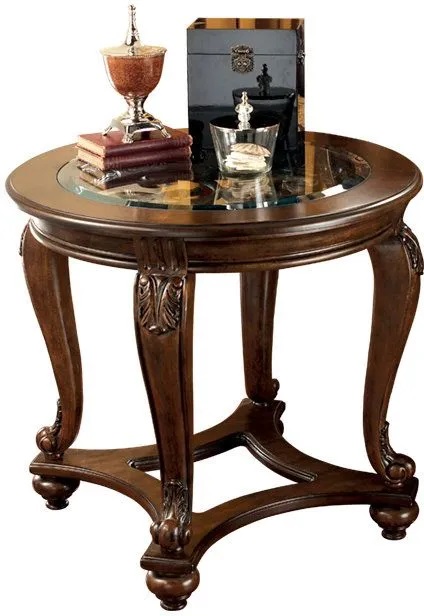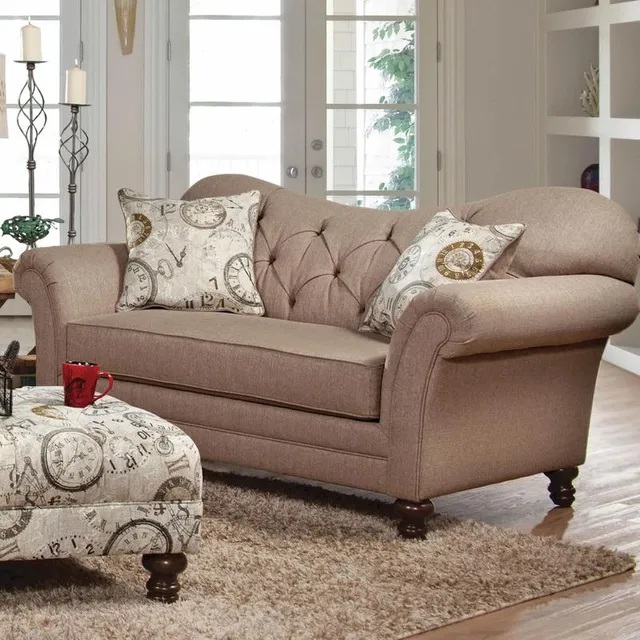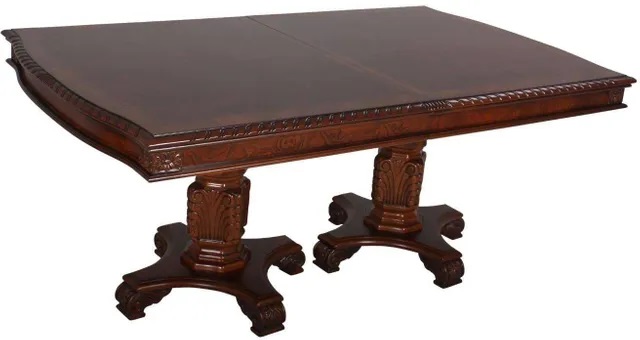From Bauhaus-inspired seating pieces to occasional tables with funky designs, furniture has evolved from practical home add-ons into singular expressions of style and design. But, despite the number of trends over the past decades—centuries, even—one style remains the standard interior design model above all others: traditional interior design.
Mastering careful attention to details and classic artistry, traditional home design effortlessly exudes a welcoming feeling and an air of sophistication that remains in fashion even throughout the rise and decline of popular décor movements like mid-century modern or the industrial-style era.
To help you achieve that timeless look for your home, we’ve put together this design guide where we explain the dos, the don’ts, and all the elements you need to ace traditional decorating style.
At a Glance:
Decoding Traditional Interior Design
Essential Elements of Traditional Furniture
How to Add Traditional Design to Your Home
Variations on the Traditional Furniture Theme
What is Traditional Interior Design?
First, let’s make one thing clear—traditional design is anything but boring. Although it recalls to simpler times and often appeals to finer tastes, by understanding the fundamentals, you can create a truly spectacular setup that will stand the test of seasonal trends.
What It Is ✓
The hallmarks of good traditional design can be traced back to European influence, in particular, royalty. While we don’t expect your home’s traditional décor to look like a replica of the Palace of Versailles, there are definitely inspirational elements from the setting and era that designers can incorporate into living spaces.
Play up Euro-centric patterns, such as the fleur de lis, the Celtic Knot, checkered motifs, fluting, and pops of Rococo shapes. However, balance is also important. While opulence reigns supreme in this realm of design, custom also places emphasis on balance and harmony. Traditional style often highlights one or a few details, but an excessive mix of too many different textures takes away from the appreciation of each piece’s fine details.
Other iconic features:
- Carved wood
- Tufting
- Queen Anne legs (cabriole legs)
- Wingback design
- Rounded lines and profiles
What It Isn’t ✗
Many people imagine traditional design as a strict style template, but the truth is it’s an homage to fine craftsmanship; at the height of the style’s popularity, furniture was made by hand, so each piece was made with pride. During this same time period, monarchies and royalty were still in fashion, so decorating living spaces was a way for homeowners to emulate that lifestyle.
For that reason, symmetry and structure are key factors of traditional interior design, while simplicity was inferior to extravagant details that demonstrated a skill for furniture making (in other words, the money to afford the lifestyle of fine furnishings).
The hero of traditional-inspired design is wood, and while lighter wood finishes aren’t unseen across the design spectrum, darker finishes are far more classic and favorable. On the other hand, metal and glass are used sparsely as secondary materials.
Get a better idea of how these essentials come together with this Hughes Furniture 3-piece traditional living room set with intricately carved wood molding and a classic fabric pattern.
History of Traditional Interior Design
The height of traditional design’s popularity spans the 18th and 19th centuries. Its rise also coincides with the Age of Enlightenment, a movement that placed heavy emphasis on perfection, neat construction, and symmetry—all characteristics that played into the overall look and feel of traditional furniture.
While trends moved to more daring designs later, decorators would still incorporate the style into living spaces for a timeless feel that complements or contrasts other styles with natural elegance.
Explore More: Our Guide to Modern Design Style
Essential Elements of Traditional Interior Design
Let’s evaluate four major pillars of traditional interior design: details, craftsmanship, ambiance, and materials.
Ornate Details

Whereas modern home designs go for clean lines, curvy shapes in a mix of lines and contours give traditional home schemes their signature flow and feel. Virtually every surface is a chance to demonstrate elaborate scrolling or fluting, as seen on this Signature Design by Ashley Norcastle end table.
The addition of cabriole legs, an open diamond bottom, and beveled glass are rich details that add layer upon layer of dimension for a furniture piece that is equal parts functional as it is an art installation.
Sturdy Furniture Construction

When proper craftsmanship is put into furniture, you can rely on sturdy construction as well. And this isn’t just for wooden furniture. Take this Hughes Furniture reverse camel back sofa, for instance. Its contoured shape fits the traditional scheme flawlessly, while rolled arms with pleated trimming and turned wooden legs provide comfort that is also high-end design.
The button tufting—another tell-tale of classic design—not only adds a pop of personality, but the tufts resist sagging and bunching, giving added structure that adds to the quality of this loveseat. Yet another example of traditional design used purposefully as an ode to the spirit of heirloom furniture.
Warm Lighting

Smaller furniture and home décor are great ways to add a stamp of traditional design to any space without having to fully commit. Mirrors, decorative figurines, and wall art are classic go-to embellishments, while other fixtures, like this Pacific Coast table lamp, are prime examples too.
The base finished in gold cast in a fleur de lis base capture the whimsy of traditional design’s ornate detailing without going over-the-top. Use solo, as a pair, or in a motif throughout the living space as a statement or as a cohesive set of accent pieces to tie the vintage look together.
Darker Wood Finishes

One word of advice: Dark wood finishes may be a symbol of traditional design, but smaller rooms are better off with different shades (ivory, ecru, and white are also part of the color palate). But for living spaces that can handle the robust look of dark wood, we say go for the option.
This Crown Mark double pedestal dining table would make a regal addition to formal dining settings, gilded with subtle wood carvings that give dimension with a demure approach. Note the extension leaf and banquet-style design, both encouraging an inviting setting indicative of traditional design.
Expert Tips for Adding Traditional Interior Design to Your Home
Follow these tips from our design specialists to ace the traditional look in your living room, bedding room, and dining room.
Traditional Style Living Room
One of the more popular traditional living room ideas is using furniture that evokes the Victorian era. Common features include sweeping lines and curious textures, both of which can be found on furniture pieces like this Coast to Coast Imports accent bench and Signature Design by Ashley chaise in black.
Button tufting draws on the inspiration of Chippendale-era furniture (circa 1750s) found in high estates. We’re especially fans of the turned legs showcasing two different tones, which adds an element of surprise to break up the monotony of traditional living room décor.
Go Pro: Living Décor Tip for Beginners
Traditional Style Dining Room
Meals enjoyed in special settings are the beginning of memories as timeless as the classic design. Traditional dining room ideas include all-wood tables, most often with two hearty pedestals for durability and a canvas for elaborate wood details.
For a grander presentation, display your fine china and dinnerware behind a hutch, such as this Signature Design by Ashely Charmond china cabinet. The acanthus molding adds a classic note, which pairs beautifully with accent chairs, like these Signature Design Charmond dining room arm chairs complete with complementary carvings, plus tufting and nailhead for a regal character.
Traditional Style Bedroom
As much as traditional design splurges on details, it can also shine just as graciously when properly refined. Experiment with downscaled traditional bedroom ideas like the combination of this Liberty Furniture 3-piece Carriage Court bedroom set and Liberty Furniture Messina Estates 7-drawer dresser in a rich cognac finish. The wingback profile of the sleigh bed exudes romantic design without competing with the rich carved details and hardware of the matching dresser. Together, traditional bedroom furniture pieces like these create a cozy, upscale sleep space fit for royalty.
Set the Mood: 5 Ideas for a Romantic Bedroom
Traditional Interior Design Variations
Take a look at these twists on the classic design for a little something different with a similar timeless appeal.
Modern Traditional Interior Design
Unlike its predecessor, modern traditional interior design doesn’t stick to classic themes and instead calls on inspiration from various design sources, including Californian design, Scandinavian furniture, and even traces of cottage and farmhouse design. It’s a look completely distinct from the original traditional furniture design that’s often regarded as the new contemporary.
Cultural Traditional Interior Design
Of course, tradition isn’t one-dimensional. What is trending in one part of the globe might be foreign in another, and vice versa. Here are some variations for comparison.
American Traditional Design
Influences of primitive furniture, Shakers, and the Arts and Craft movement all played a huge role in the formation of American traditional design. Think: natural materials, rustic presentations, light wood finishes, and simple designs with an emphasis on form over flashy designs.
British Traditional Design
For a lighter approach to traditional design, journey across the pond. Inspired by royal gardens and botanicals, British interior design mixes the graceful lines and embellishments of traditional design with lighter colors schemes and florals (lots of florals). The effect is a cottage feel with vintage flair that feels lived-in and welcoming.
Asian Interior Design
Feel free to call this Oriental design, as it’s often referred to by interior design experts. This variation (at least, for this side of the globe) is a diverse medley of Chinese, Japanese, Vietnamese, and other Asian influences for a one-of-a-kind look. Heavy nature references, natural materials, and exciting architecture flow across this design style.
Scandinavian Traditional Design
The chilly European culture is infamous for creating cozy living spaces inspired by nature. Pelts, shag, and nature-inspired materials are at the epicenter of this design, often referred to as hygge, which roughly translates to comfortable living.
Why Trust Us
At the center of Colder’s history is a legacy of family and community that spans over seven decades. Our family-owned business puts the home first, meaning when you shop with us, you can count on our experts to find the perfect match for your home’s needs, whether it’s an appliance, furniture, or a mattress.
Expert guidance. Honest appliance, furniture, and mattress specialists. We keep our formula simple, which is why our shoppers are saying:
“Good quality stuff. Great price. No pressure just helpful staff. I’ve been buying here for over 40 years.” — Rita O.
“The salesman was very helpful and patient with us. We ended up getting a whole bedroom set, living room, and all the things to finish off our new home. Great job Colder’s.” — Gregory B.
Shop Traditional Interior Design Furniture at Colder’s
Buy local and go traditional at your nearby Colder’s Furniture and Appliance. We’re east Wisconsin’s leading provider of everything for the home, from reliable appliances and brand-name furniture, to comfortable mattresses for the better sleep you deserve.
Shop online, by phone at (414)-476-1574, or by visiting a showroom near you in the Milwaukee area today!